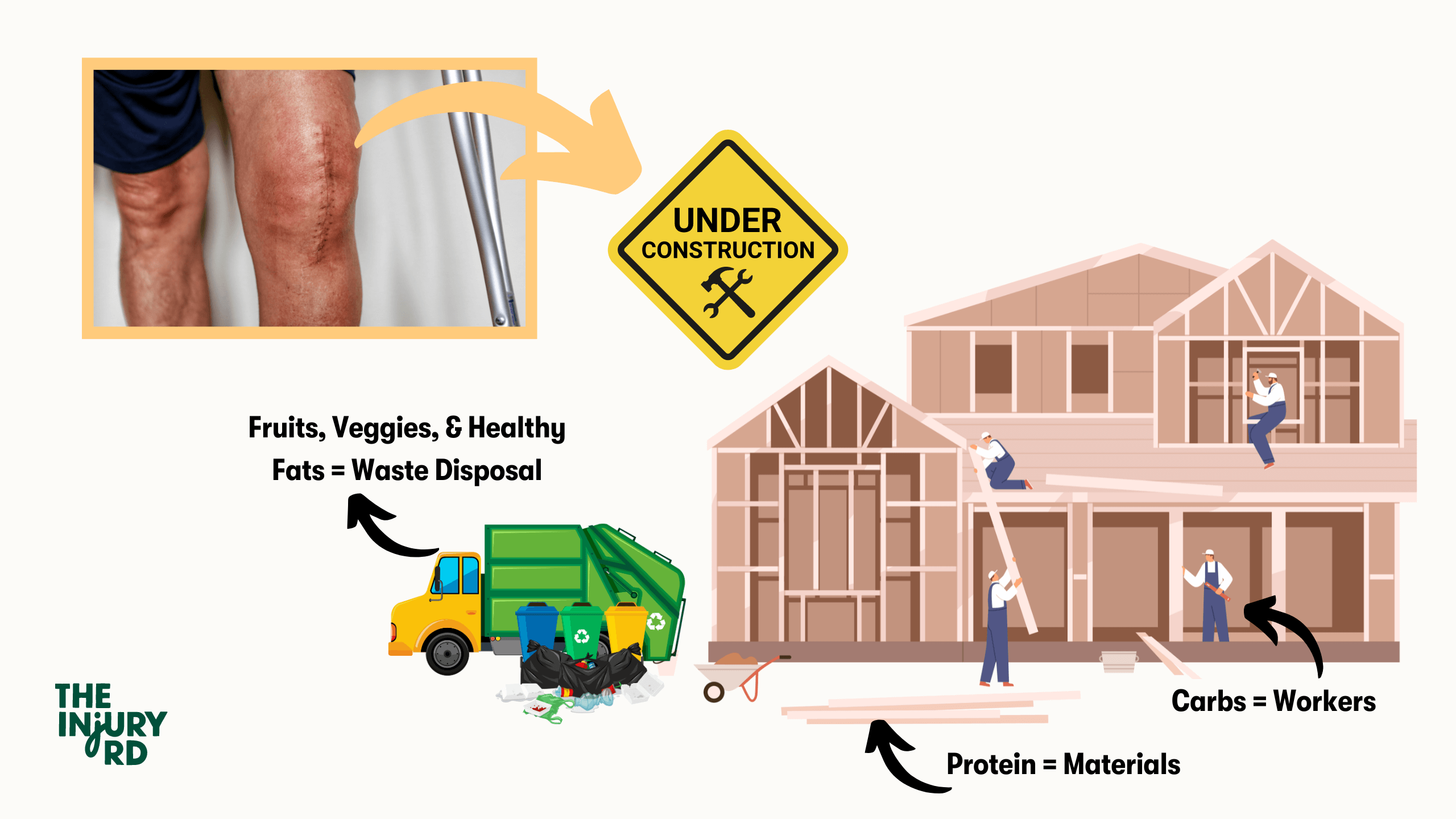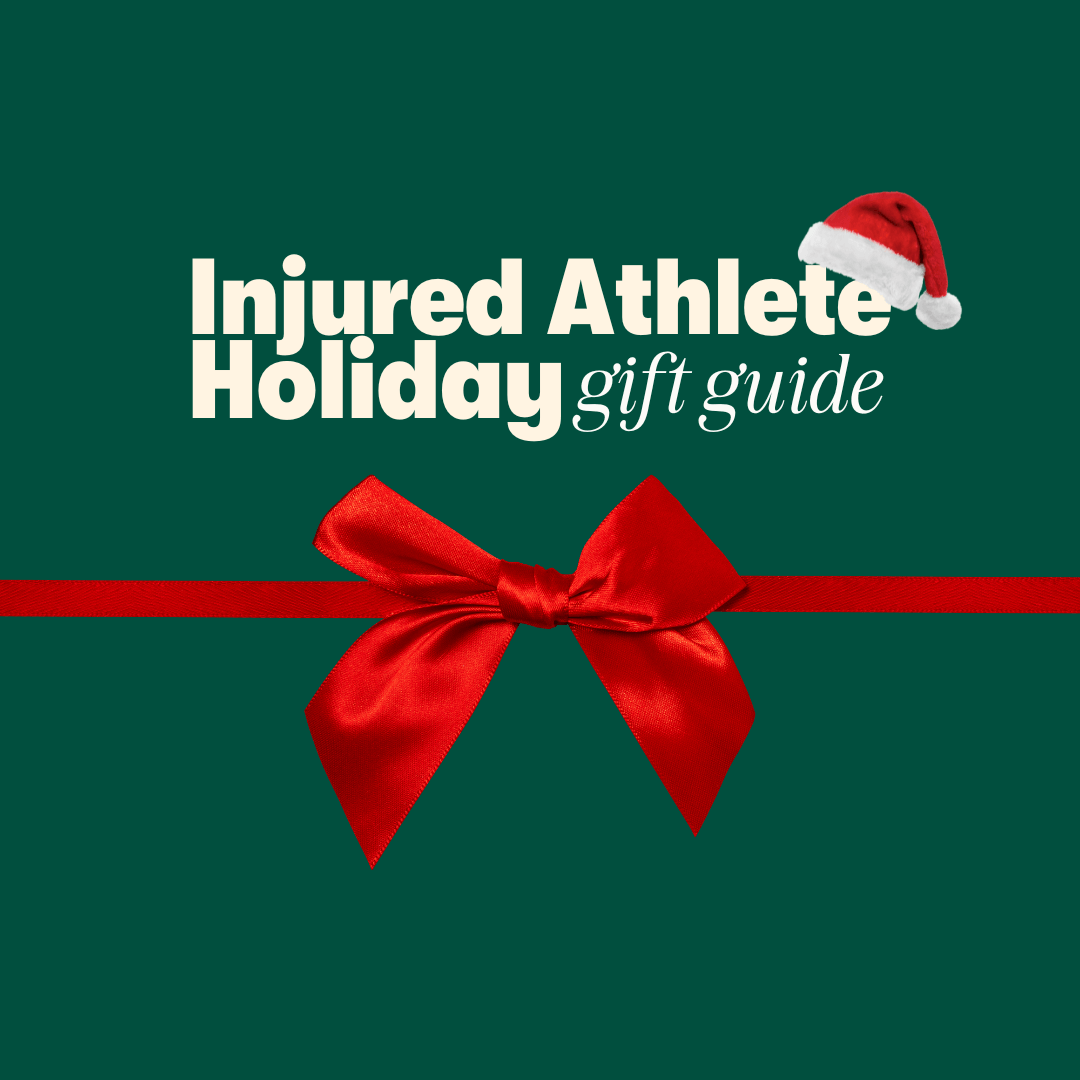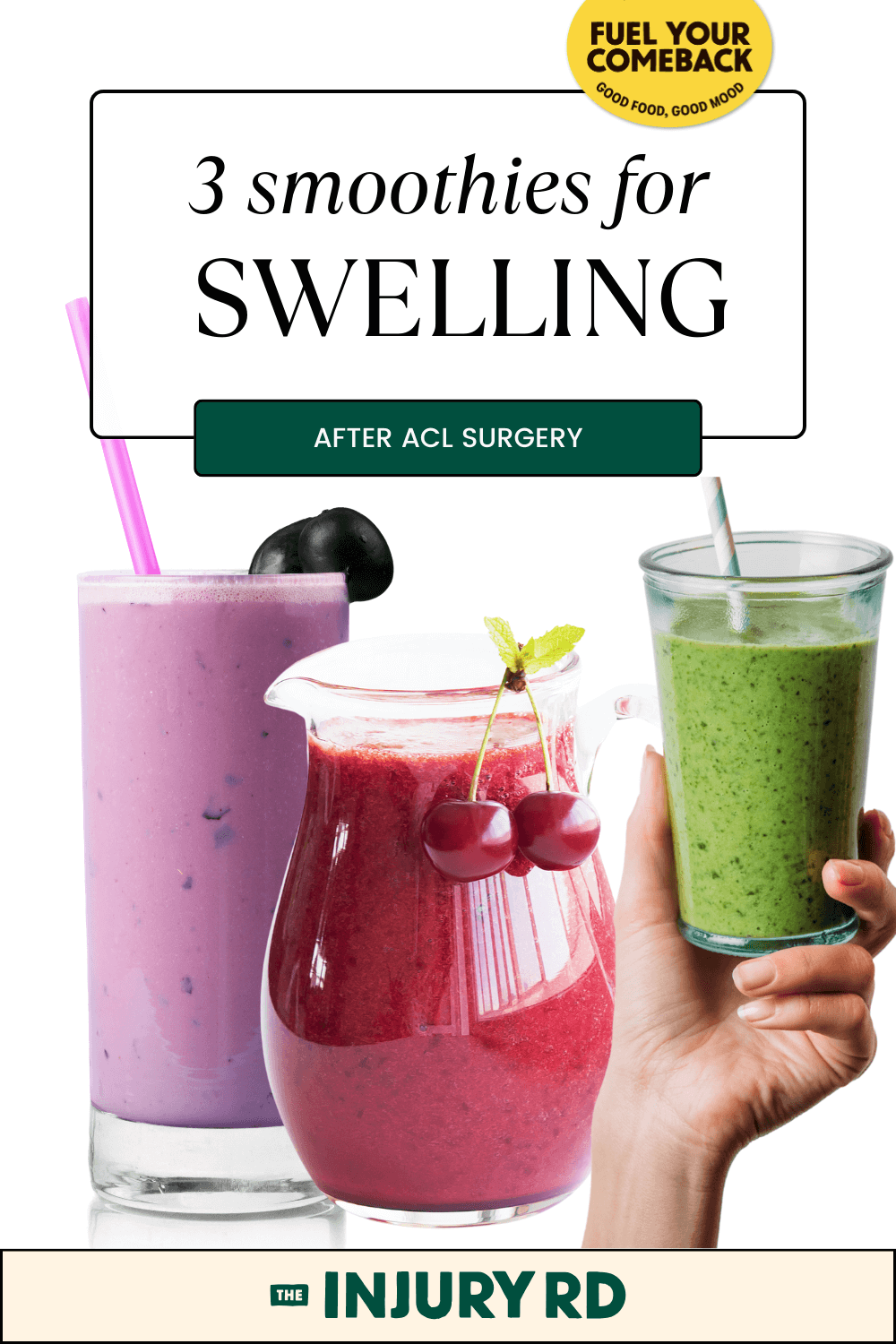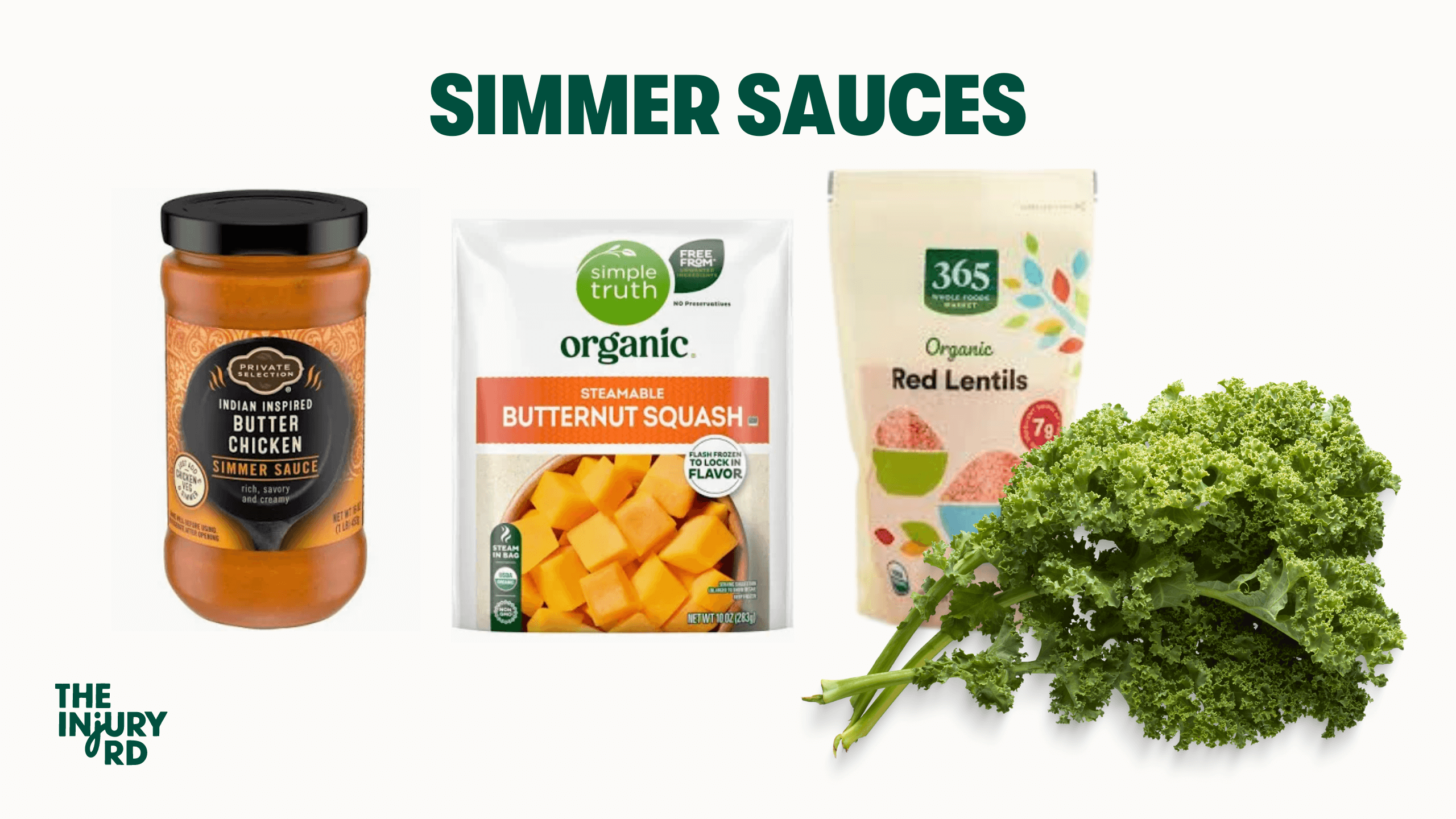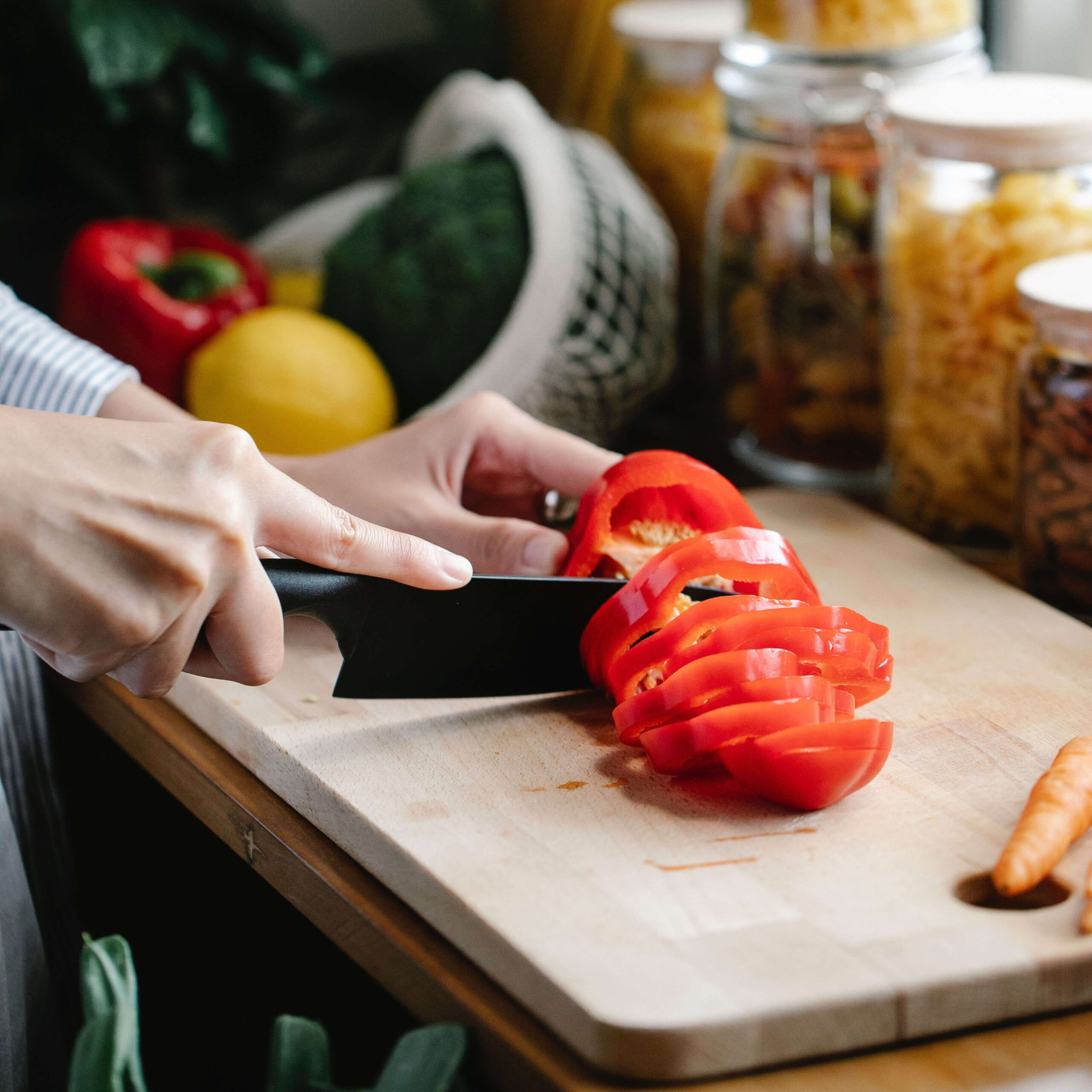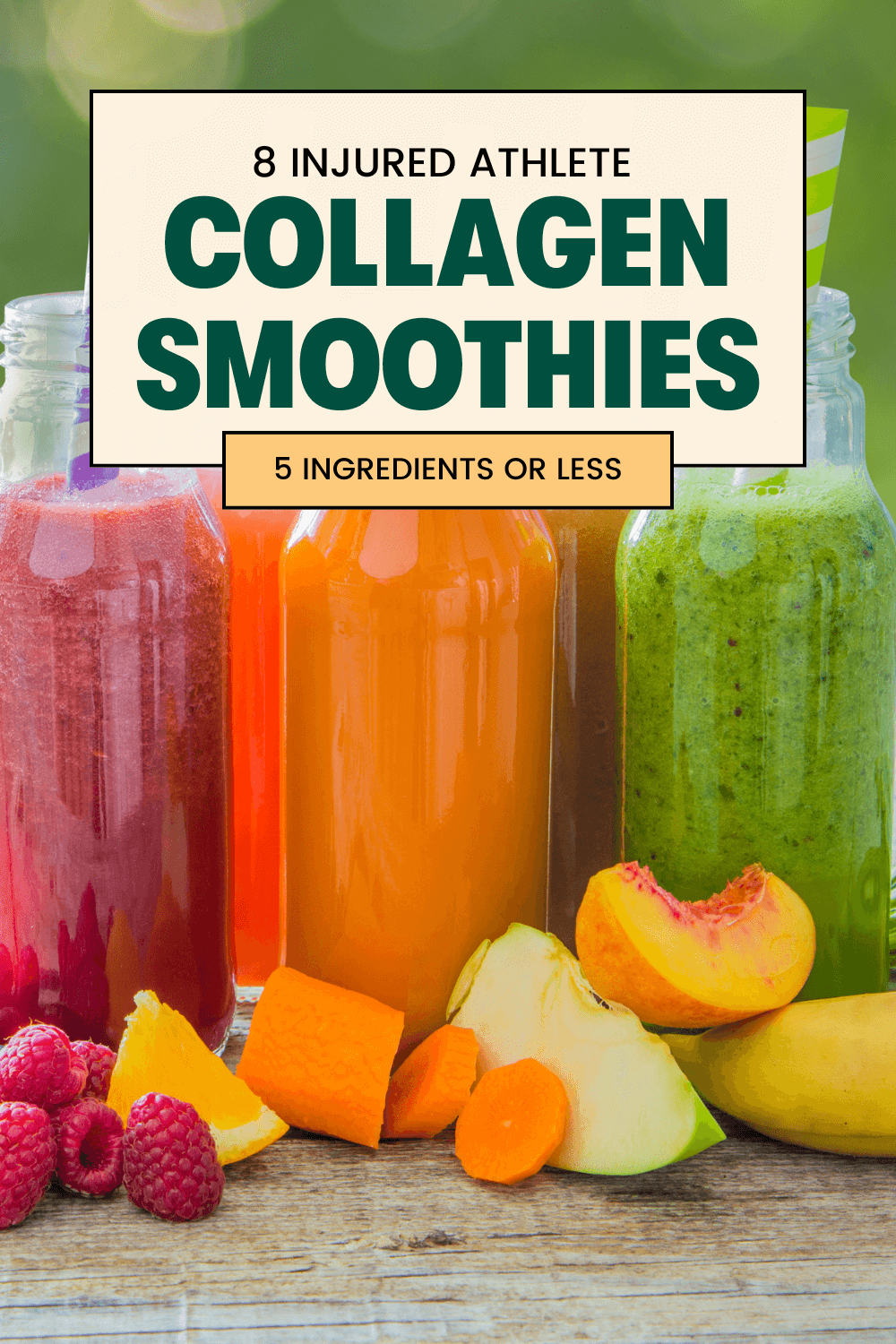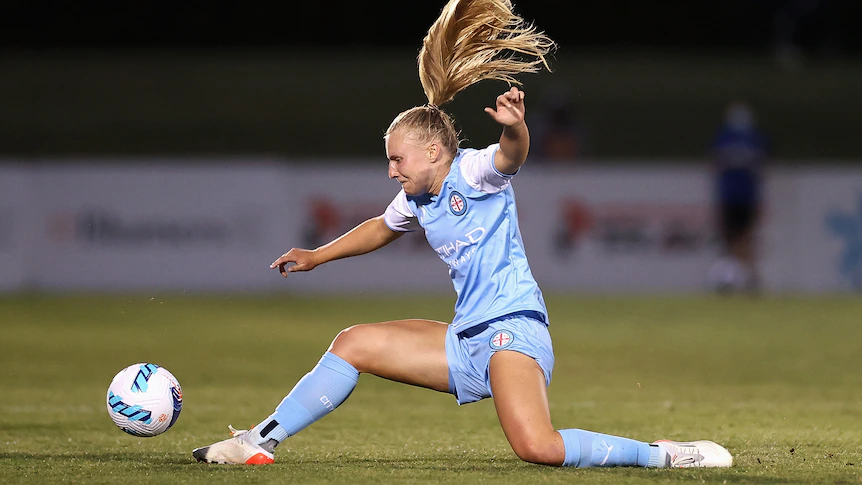Hey athlete,
You’ve got a brand new scar (or you’re about to), and you’re wondering how to get through this rehab ASAP.
Let’s talk about what foods to eat after surgery and how food can help your healing!
In this article, you’ll learn
- Why eating after surgery is so important
- How much food you need right now
- Some helpful foods and PRACTICAL ideas! (Not just a list of random foods.)
- Should you avoid any foods right now?
- What can go wrong?
Let’s take the worry of food OFF your plate, and figure out what to put ON your plate.
Want to watch this article instead?
Why is eating after surgery so important?
Well… you have 3 main goals right now:
- Provide your body all the tools (and workers) it needs to build a new house (or body part). Guess what! That’s food 🙂
- Maintain your muscle while you’re not as active as normal.
- Do your best to manage swelling and inflammation.
Unfortunately, there isn’t a magical pill that can make this process go faster, but neglecting those 3 tasks will ABSOLUTELY slow down your timeline.
Screwwww that.
Think of your injury like a construction site right now. Protein is all the building materials; the bricks, the drywall, the windows and doors. Carbohydrates are the construction workers making sure the materials get put together. Anti-inflammatory fats and antioxidants (fruits and veggies) are the garbage workers keeping your construction site nice, clean, and organized.
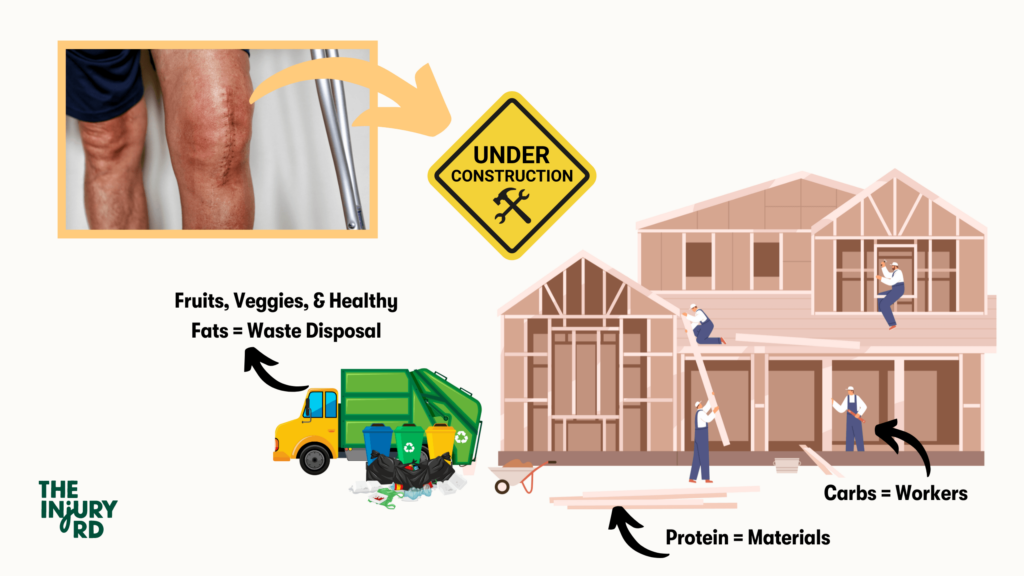
As for your muscle, we know that muscle protein synthesis, or the act of building, repairing, and maintaining muscle drops up to 50% after surgery, and most of your muscle loss will occur in the first two weeks. 1
Nutrition is 1000% a tool you need to take advantage of, and post-surgery is a CRUCIAL time for it.
How much should you eat after surgery?
Probably more than you think!
To keep this short and sweet, your calorie needs at rest will INCREASE after surgery up to 20%. 2 This increase makes up for the decrease in movement for most people.
Also consider that your body uses more energy walking on crutches vs. regular walking, your body is using energy to heal your injury, etc. 3
If you want to do a deeper dive on this topic, check out the 3-day menu challenge. You’ll learn how to calculate your needs on Day 1 🙂
If you’d like an easy calculation (that I’ve found to be accurate for most of my athletes), find your body weight in kg and multiply by 30 to 35.
Helpful Foods to Include
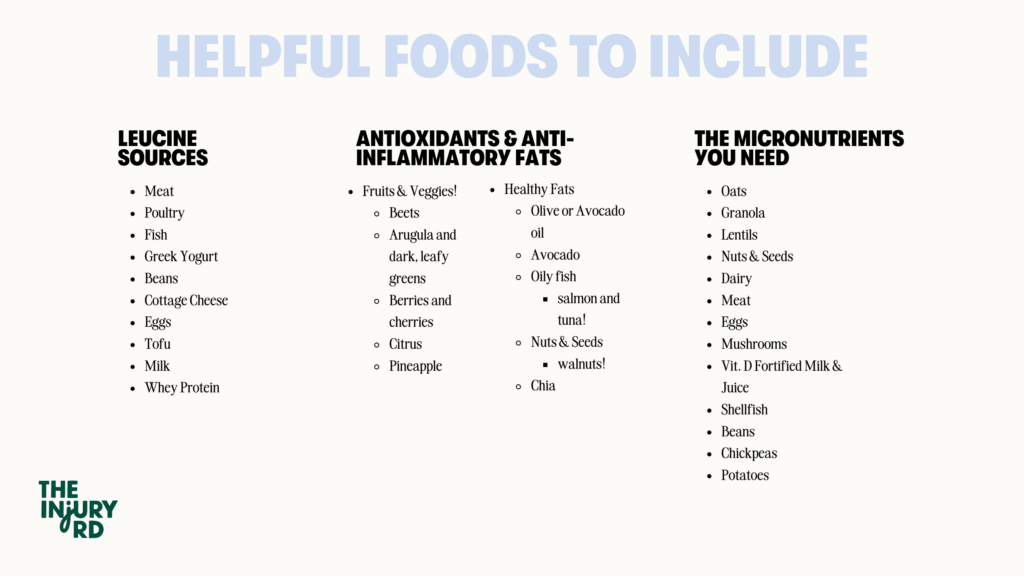
Protein (Leucine is your muscle-building key!)
We all hear stories of that one athlete with the disappearing quad after surgery. Protein, specifically the amino acid leucine, is how we try to combat that right now.
Remember I said your muscle building and repair is cut in half right now? Providing your body with ~5g of leucine (about 20g of animal protein) during meals signals your muscle to BUILD. The rest of the day, it’s getting a signal to break down.
Spreading this signal evenly throughout the day, about 20-25g of a leucine-rich protein every 4 hours, is the best way food can help you maintain your muscle right now.
Leucine-rich protein sources are things like fish, chicken, beef, dairy, and tofu.
Antioxidants (Your pain and swelling SWAT team)
Focus on berries and cherries, beets, leafy greens, and citrus, but any fruit or veggie is great! If you’re a number/goal person, aim for at least 3 per day!
If you want an easier option, tart cherry juice can count in this category. Your greens powder, unfortunately, does not. I’m sorry!
Anti-Inflammatory Fats (More SWAT members)
Focus on fish like salmon and tuna, nuts and seeds, especially walnuts and chia seeds, olive oil, and avocado.
Fiber (It does more than help you poop)
Yes, constipation is a huge concern after surgery, and fiber (AND WATER!) will help with this, but fiber can also be helpful for overall body composition goals in general. Considering this is a big worry for many athletes at this time, focus on your fiber.
Focus on foods like oats, beans, chickpeas, lentils, nuts, seeds, fruits, and veggies.
CARBS! (Yes! They are critical!)
Did you know low carbohydrate intake can increase muscle breakdown?
Yeah, not what we’re looking for.
Please don’t be scared of carbs! You need to include them at every meal. Aim for at least a “fist-size” portion or two.
Easy Meals After Surgery
Greek yogurt bowl with granola, walnuts, and berries
I love this Oikos option with 20g of protein per container.
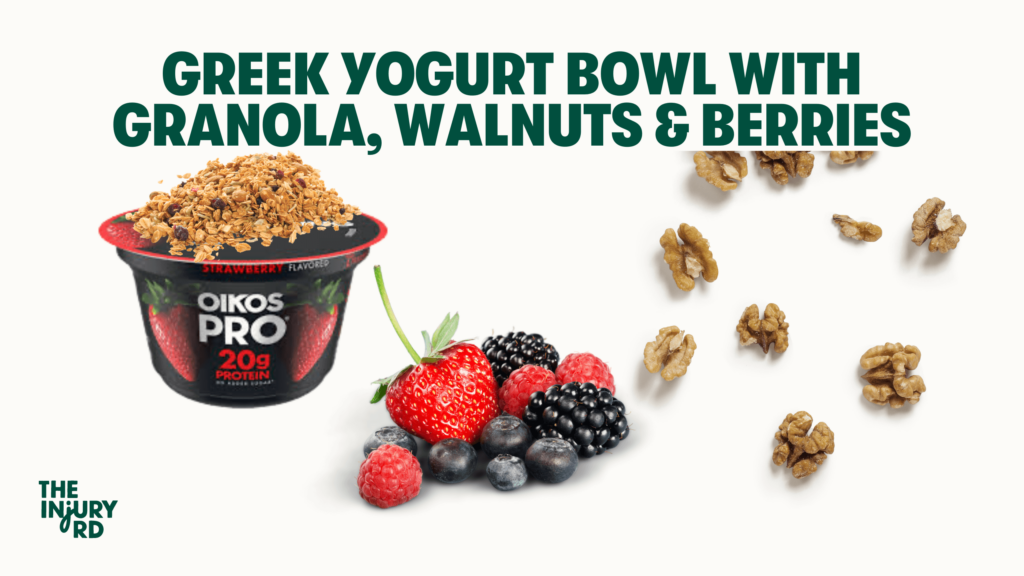
Oatmeal with protein powder, chocolate chips, banana, and chia
An easy-to-eat option with some hidden protein and a bit of a sweet kick.
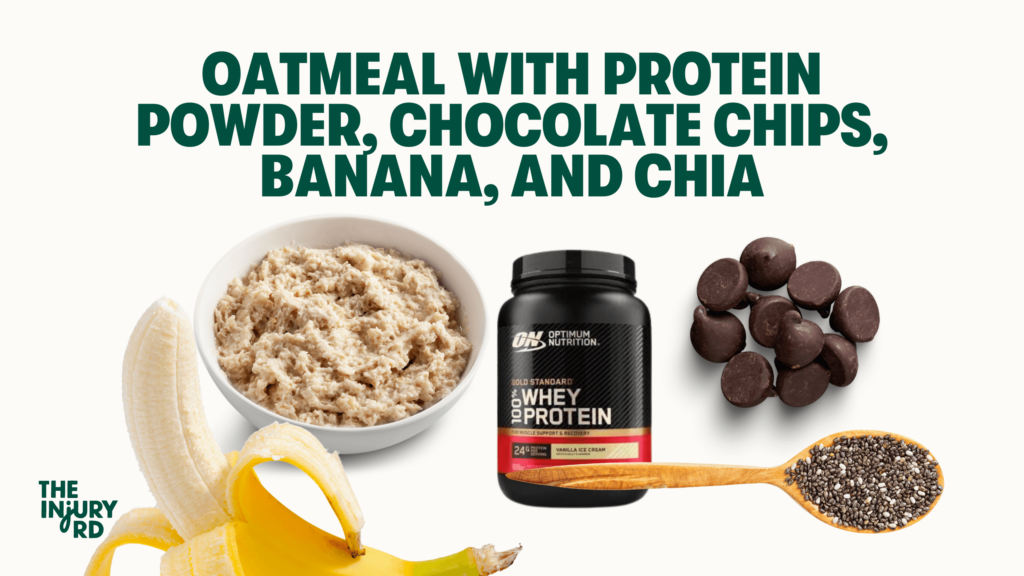
Soup with rotisserie chicken
A classic, but add a bit more protein for yourself. Bonus if you add a piece or two of whole grain or sourdough toast. Bonus bonus if you go for a chicken tortilla soup and add some avocado slices!
I also love a butternut squash soup with pomegranate seeds and almond slices!
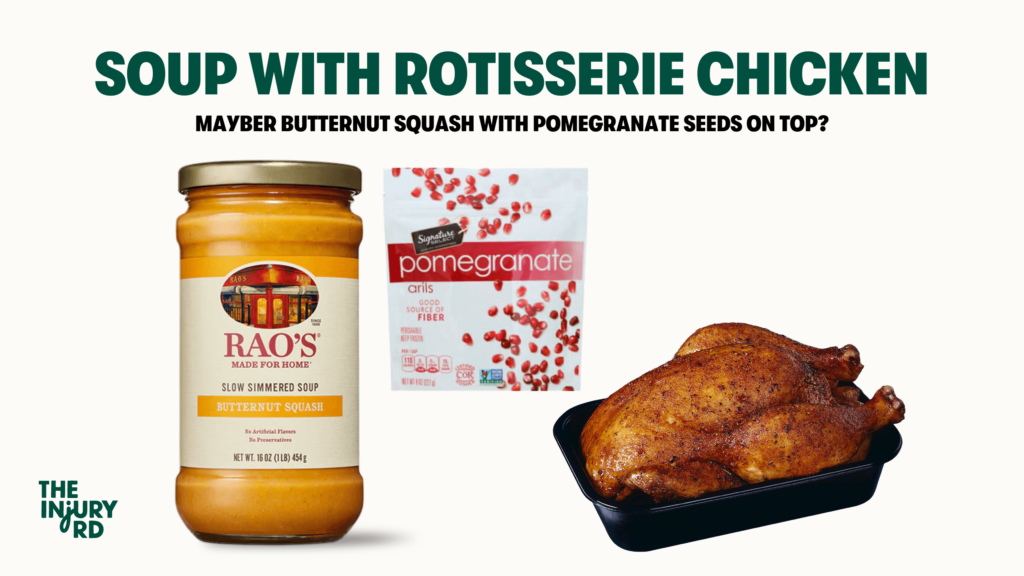
Tostada with beans and guacamole
A bit of crunch, and an easy thing to put together. If you want to make it every faster, mix beans and guac in a bowl and use it as a dip.
(I also love to mix salsa and cottage cheese for a nice little protein dip. Don’t knock it til you try it!)
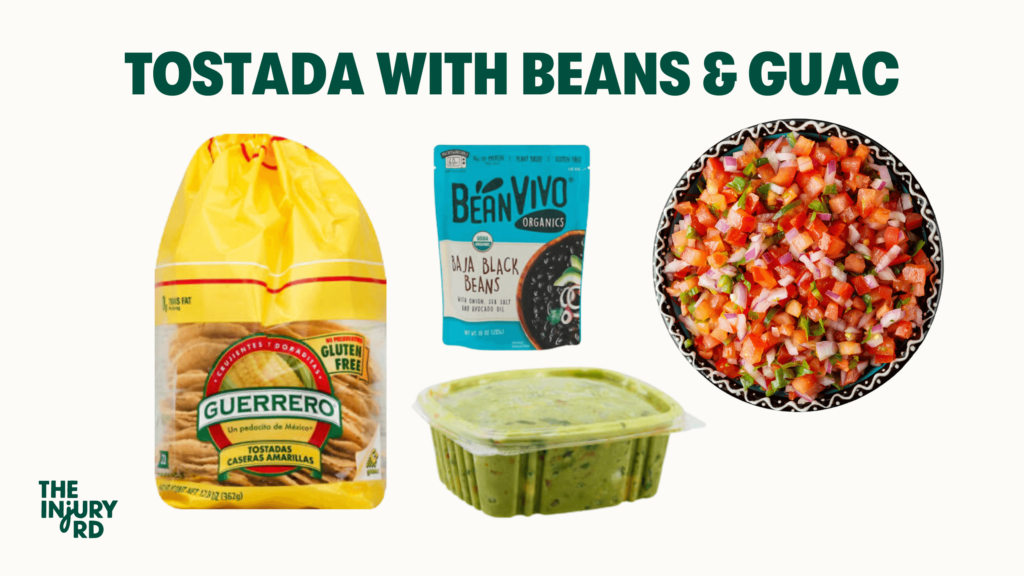
Frozen salmon and a salad kit
When you start to get a bit of an appetite back and can stomach the thought of fish, go for a super simple way to prepare it. Just pop it from the freezer to the oven.
Don’t forget to add carbs into your salad (quinoa, couscous, croutons, corn, beans, fruit, etc.), on the side, or as an extra snack later.
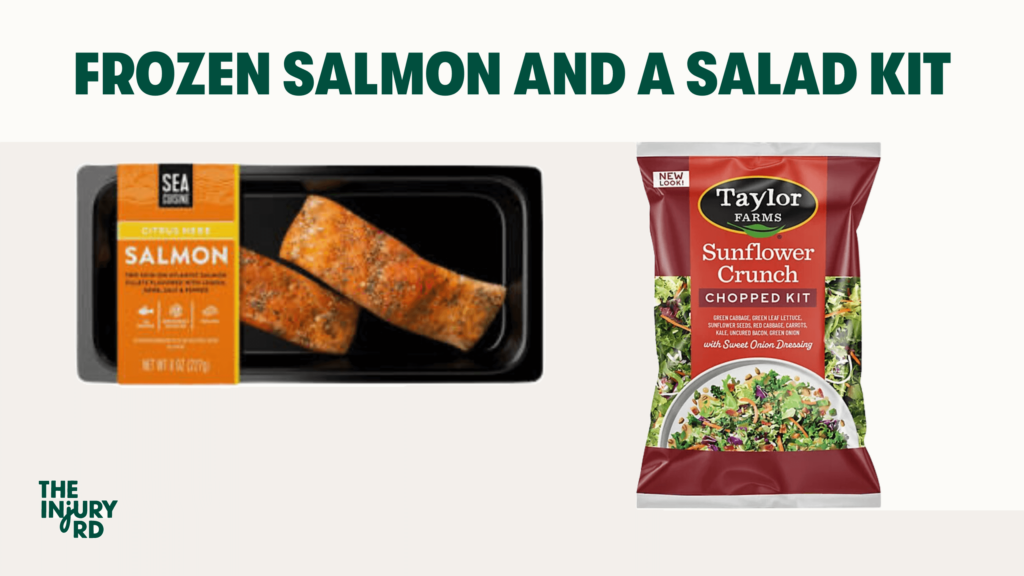
Foods to Avoid After Surgery
Honestly, I want you to focus more on what you CAN do, and things will naturally fall where they need to.
Remember, eating ENOUGH is important, so something is better than nothing. It’s okay to lean into foods that bring you comfort. Just make sure food is not your only coping tool, and you’re not neglecting the helpful things.
If you feel concerned with your relationship with your food or body during this time, please consider joining our next round of Rewire; a body image group for injured athletes.
What Can Go Wrong?
Uh… a lot haha. Post-surgery fueling is HARD.
- Feeling nauseous/not hungry
- Feeling tired/in pain
- Constipation
- Feeling like you can’t stop snacking
There is a big gap between what you “should” do and all the obstacles that can make that feel super difficult.
Be kind to yourself!
Conclusion
Most importantly, make sure you eat enough. Focus on getting protein every 4 hours or so. Eat plenty of fruits and veggies and whole grains. And don’t be too hard on yourself!
Check out more tips for post-op nausea, constipation, appetite, and more examples by downloading your Post Op Survival Guide.
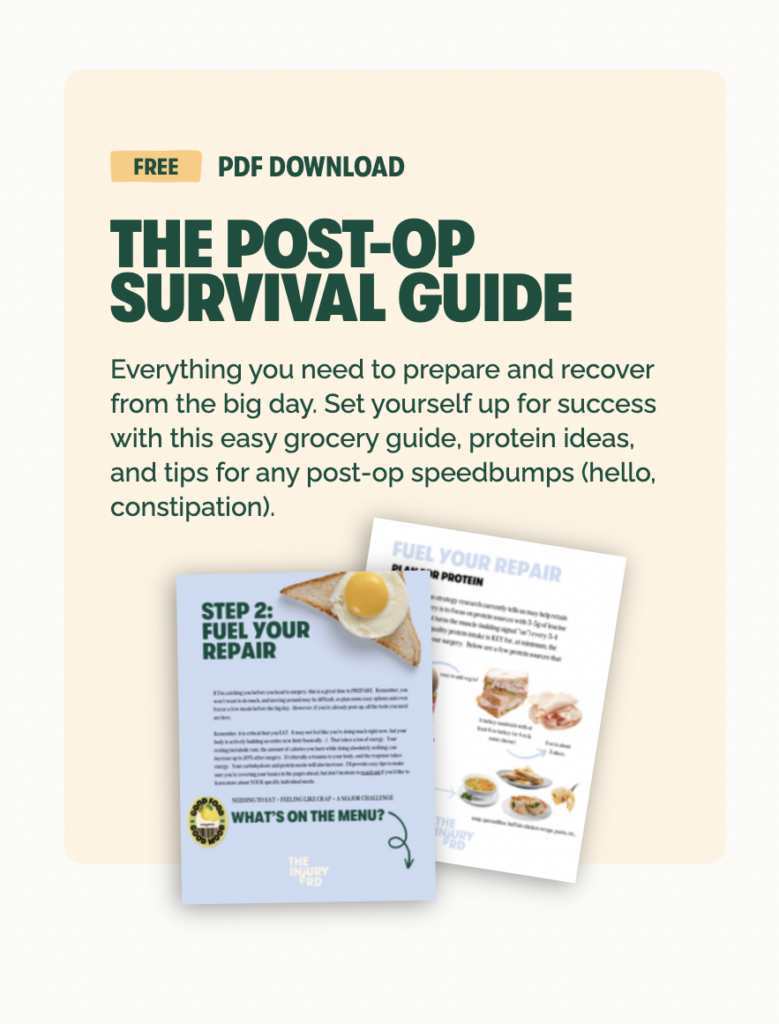
You might also like…
Smoothies to Reduce Swelling After Surgery
Submit a question or topic you’d like me to cover!
